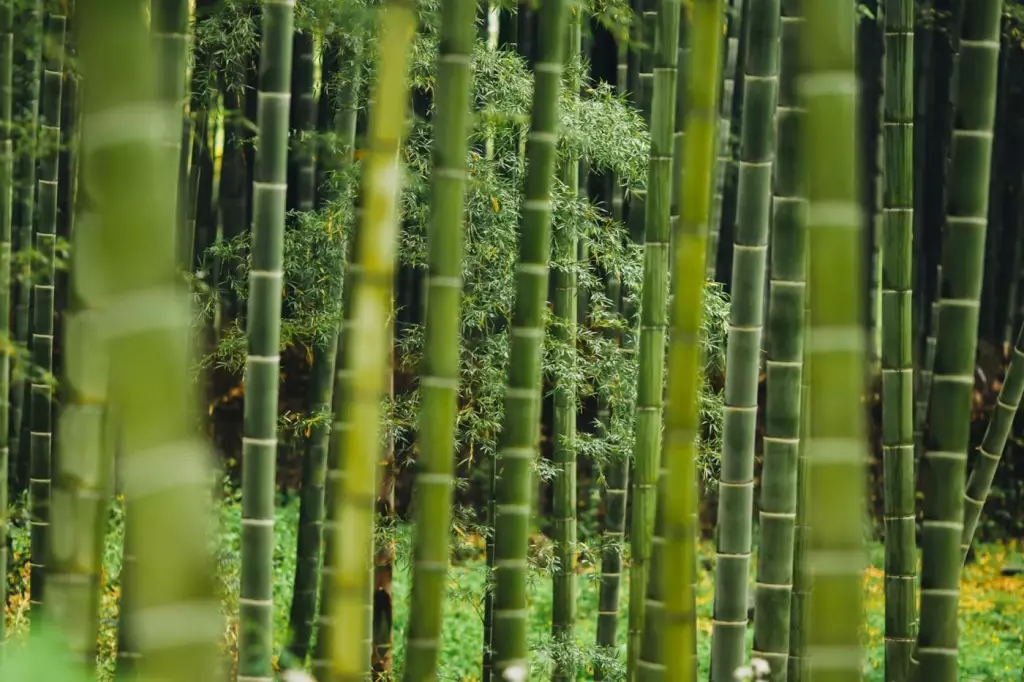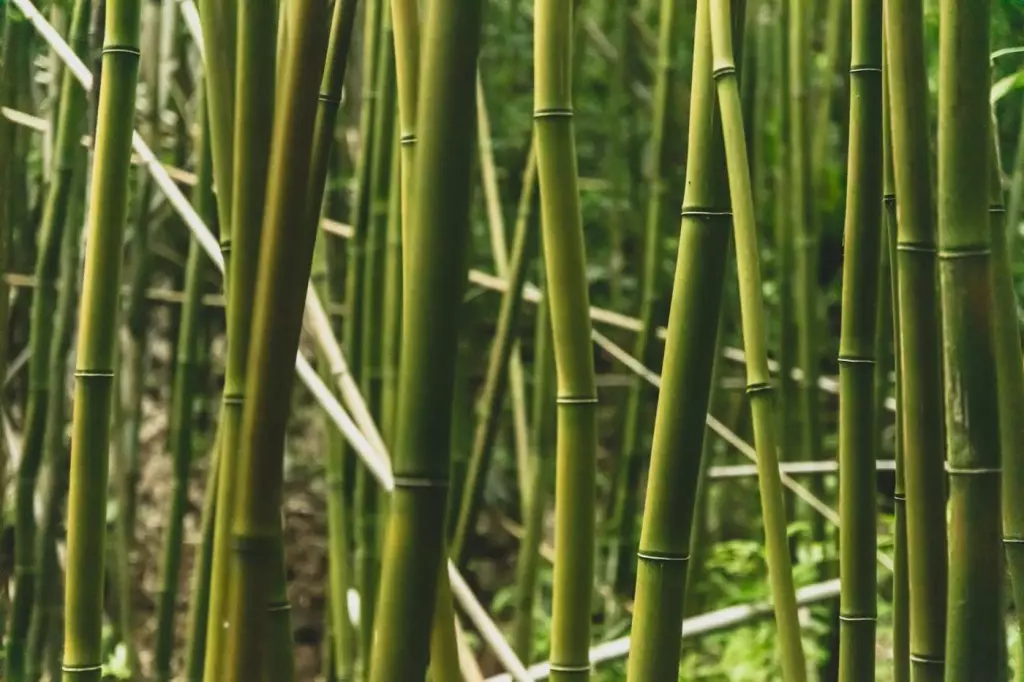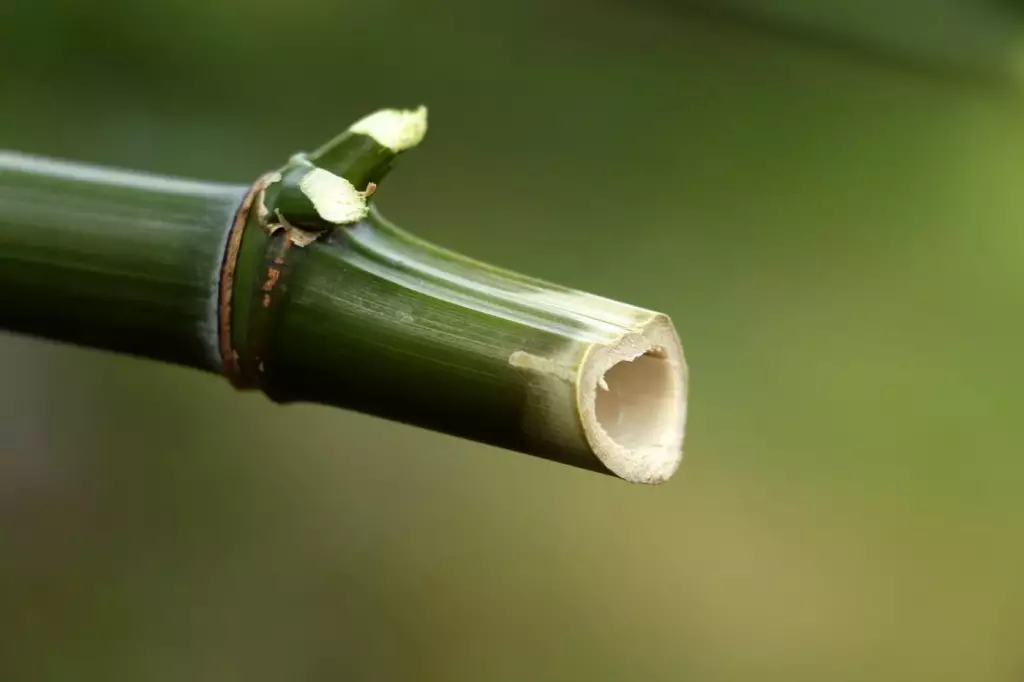How Often Can Bamboo Be Harvested? (Harvest Chart)
Bamboo is renowned for its rapid growth cycle, distinguishing it markedly from hardwood trees that require decades to reach maturity. This characteristic allows for frequent harvesting without depleting resources or damaging the ecosystem. In this article, we'll present a harvest chart for bamboo that outlines specific timelines and techniques to optimize yield and sustainability.
Bamboo can be harvested every 3–5 years, significantly shorter compared to hardwoods, which might take 20–50 years to mature. This rapid growth rate makes bamboo a highly sustainable resource. The exact frequency depends on the bamboo species and the purpose of the harvest.
Individual species of bamboo have varying growth rates, affecting how often you can harvest them. Let's take a look at how frequently you can harvest different types of bamboo.
Summary
- Clumping bamboo is harvested every 4–5 years and giant bamboo every 3–5 years, requiring careful management to prevent invasiveness, especially for species with aggressive rhizomes.
- The optimal time for harvesting bamboo is during the late winter to early spring period, when the culms have matured and hardened, and the starch content is reduced, making them less attractive to pests and suitable for durable applications.
- Up to 20–25% of a bamboo grove's culms can be sustainably harvested annually once they reach maturity, typically within 3–5 years, during the dormant period at the end of the dry season to minimize pest infestation risks and ensure high-quality bamboo for various uses.

On this page:
Optimal Harvesting Frequency for Bamboo
When it comes to harvesting bamboo, timing is crucial for both the health of your plants and their sustainability.
You’ll want to target mature bamboo which typically reaches maturity between 3 and 5 years after the new shoots emerge.
Harvest frequency based on climate and environmental conditions
You live in an area where the climate heavily dictates your bamboo harvesting schedule. Mature bamboo can be harvested sustainably, aiming to preserve the grove's long-term growth. Here's what you need to consider:
| Climate/Condition | Recommended Harvesting Frequency |
|---|---|
| Dry season | Every 3-5 years, during the driest period. |
| Rainy season | Avoid harvesting; wait for drier conditions. |
| Tropical climate | Every 2-4 years, depending on growth rate and environmental impact. |
| Soil conditions | Adjust frequency to allow soil recovery; typically, a 3-5 year cycle, considering soil health assessments. |
Harvesting during the dry season
Harvesting bamboo during the dry season offers several advantages that are not only beneficial for the immediate ease of harvesting but also for the long-term sustainability of the bamboo grove.

The absence of rain during this period minimizes soil disturbance, which is crucial in preventing soil compaction and preserving the soil structure. Compacted soil can impede water infiltration and root growth, leading to poorer health of the bamboo.
Additionally, the dry conditions make transportation of the harvested bamboo much easier, reducing the risk of damage to the bamboo and the surrounding environment.
This period allows for cleaner, more efficient harvesting operations, minimizing the impact on the grove and facilitating quicker turnaround times for processing the bamboo.
Stop harvesting during the rainy season
Conversely, the rainy season presents several challenges that can make it a less favorable time for bamboo harvesting.
The primary concern is the heightened risk of soil erosion, which can strip the land of its topsoil—the most fertile layer—thereby reducing the soil's nutrient content and its ability to support future bamboo growth.
Furthermore, the wet conditions can damage the plant base, affecting the bamboo's structural integrity and potentially leading to increased susceptibility to disease and pests.
Harvesting in a tropical climate
In tropical climates, where warmth and moisture promote year-round growth, bamboo groves can support more frequent harvesting without compromising the plants' health or the ecosystem's balance.
This continuous growth cycle means that mature bamboo is available for harvesting at a quicker rate than in cooler or more variable climates, where growth may be slower or seasonal.
Harvesting depending on soil conditions
Sustainable bamboo harvesting practices must always consider the health of the soil. Healthy soil is the foundation of a productive bamboo grove, providing the essential nutrients and moisture that bamboo needs to grow.
Sustainable practices include allowing sufficient time for soil recovery between harvests and implementing measures to prevent soil degradation, such as erosion control and organic matter replenishment.

Bamboo Varieties and Their Harvesting Rates
Generally, the mature culms are the ones you'll harvest, leaving the younger shoots to continue the growth cycle. Giant bamboo varieties grow quickly and can be harvested more frequently—some reaching harvestable size in 3 to 5 years.
Remember, the size and growth patterns of your bamboo, whether it forms a tight clump or has spreading rhizomes, will influence your harvesting schedule.
Here's a brief chart to help you understand the harvesting rates of various bamboo types:
| Bamboo Type | Harvest Frequency |
|---|---|
| Clumping bamboo | Every 4-5 years |
| Giant bamboo | Every 3-5 years |
| Common bamboo | Every 5-6 years |
In your bamboo garden or grove, pay attention to the natural clump formations and the spreading of rhizomes. Clumping bamboo tends to grow more slowly and can be less invasive, making it a popular choice for ornamental purposes.
If you plant spreading species, monitor your bamboo grove carefully. Some can become invasive due to their aggressive rhizomes, requiring more frequent management and harvesting to keep them in check.
Some regulations restrict invasive bamboo species which you should be aware of as suggested in this article.
Growth and Harvesting Cycles of Bamboo
Bamboo plants develop through a process that involves the elongation of the culms from the ground, accompanied by the formation of nodes, which are the joints that connect sections of the stalk.
Bamboo has a rapid growth phase where it reaches its full height within a couple of months. However, it is not ready for harvest immediately.
Young culms may look sturdy, but they lack the necessary structural integrity. It takes about 3 to 5 years for most species of bamboo to mature fully, while some species may require even up to 7 years.
During this time, the culms grow stronger and the starch content decreases, lessening the risk of rot and pest infestations.
- Mature culms should be selected for harvesting because they provide the best quality bamboo poles.
- Harvesting bamboo shoots involves a different cycle, typically occurring during the spring.
Renewable resource is a key trait of bamboo, it regenerate quickly after harvesting without needing replanting. To maintain a healthy grove, harvest 20-25% of the culms annually, selecting the oldest ones to allow room for new growth.
| Year of Growth | Harvest Action |
|---|---|
| 1-2 | Growth period, no harvest |
| 3-5 | Ideal period for harvesting mature culms |
Remember that each bamboo species may have its unique cycle, so adjust your harvesting accordingly.
Tools and Techniques for Harvesting Bamboo
When harvesting bamboo for projects like construction or furniture making, you need the right tools and methods to ensure a clean cut without damaging the plant. Here's how you can do it effectively:
Techniques for harvesting bamboo
To get the most out of your bamboo, choose the right time for harvesting, typically when the culms are mature, often during the dry season.
Mature culms are harder and better suited for building materials or furniture making. When cutting, make a clean, sharp cut above the node to help protect the plant from pests and diseases.
After cutting, remove the culm sheaths and trim any branches close to the base with pruning shears.
- Regularly prune older branches to encourage new growth and maintain the health of your bamboo.
- Have a receptacle ready to collect the cuttings, which can be used as compost or further furniture construction.
Bamboo harvesting tools
The versatility of bamboo as a woody material means you’ll need tools capable of making precise cuts.
- Sharp knife: Ideal for removing sheaths and making smaller, more precise cuts.
- Chainsaw: A chainsaw can be used for cutting larger culms, but it's important to use it carefully to avoid splintering.
- Pruning shears: Essential for smaller branches and a must-have in your toolkit.
- Machete: A machete can be used for quickly cutting through the bamboo, perfect for clearing areas or harvesting in bulk.
Utilization and Products From Harvested Bamboo

Bamboo is a versatile material, known for its widespread use in an array of products. You can find bamboo poles used in construction, similar to how you’d use traditional timber trees.
Due to their strength and flexibility, these poles are ideal for building structures, especially in regions like Asia. In your garden, bamboo can serve as an ornamental plant, enhancing aesthetics with its elegant appearance.
But it's not just about looks; bamboo also plays a role in forestry and bamboo harvesting, offering a sustainable alternative to conventional wood.
Here’s a brief look at how bamboo is transformed:
Bamboo culinary uses
- Young bamboo shoots are edible and used in various culinary traditions, particularly in Japan, China, and India.
- Bamboo is also a source for making paper, which has a unique texture and is quite durable.
Bamboo products
- Furniture: Chairs, tables, and shelves.
- Flooring: Durable and eco-friendly bamboo flooring.
- Utensils: Cutting boards, bowls, and chopsticks.
Bamboo crafts and other uses
- Bamboo is crafted into musical instruments, fishing rods, and even textiles.
- It's used to make products that are resistant to insects, making it a reliable choice for both indoor and outdoor use.
Best Month to Harvest Bamboo
When you're planning to harvest bamboo, typically, the best month to harvest is during the dry season, which can differ based on your geographical location.
Dry season harvesting
Harvesting bamboo in the dry season is crucial for several reasons, primarily related to the physiological state of the bamboo and the environmental conditions.
Late winter to early spring
During this period, bamboo culms, which are the main stalks of the bamboo, have had enough time to mature and harden fully.
This maturation process involves a reduction in the starch content within the culms, making them less attractive to pests such as beetles, which can cause significant damage to harvested bamboo.
Harvesting during this time ensures that the bamboo is at its strongest, most durable state, making it suitable for construction, furniture, and other applications requiring high-strength materials.
The lower moisture content due to the dry season also facilitates easier transportation and processing since the bamboo is lighter and less prone to mold or fungal infections.
End of the dry season
Towards the end of the dry season, the starch content in the bamboo begins to rise again. This increase can pose a higher risk of pest infestations after harvesting.
However, some specific applications may benefit from this higher starch content, making the end of the dry season an acceptable, if not ideal, time for harvesting, depending on the intended use of the bamboo.
For example, certain crafting or manufacturing processes might require slightly higher moisture and starch content for flexibility or other properties.
Monthly guidance to harvesting bamboo
| Month | Recommendation |
|---|---|
| January | Not ideal |
| February | Varies by climate |
| March | Ideal |
| April | Ideal |
| May | Starting to risk |
| June | Not ideal |
| December | Not ideal |
January harvest
This month is generally not ideal for harvesting bamboo across many regions because it may fall into either a very wet season or a very cold period, depending on the geographical location.
High moisture content during this time can make the bamboo more susceptible to damage and pest infestation.

February harvest
The suitability of February for bamboo harvesting varies significantly by climate. In some areas, it marks the transition towards the end of winter and the beginning of dryer conditions, making early harvesting possible, especially in more temperate zones.
March & April harvest
These months are often ideal for bamboo harvesting. The weather conditions in many regions during this time are conducive to lower starch content and reduced moisture levels in the bamboo, aligning with the late winter to early spring window described earlier.
May harvest
As we move into May, the risk begins to increase due to rising temperatures and moisture levels in many areas, signaling the onset of the rainy season.
While it's still possible to harvest bamboo, there's a higher chance of encountering issues related to pest infestation and moisture, which can affect the bamboo's quality and longevity.
June & December harvest
Both months are typically not ideal for bamboo harvesting. June often falls squarely in the rainy season for many regions, leading to high moisture content in the bamboo and increased pest activity.
December, on the other hand, can be too cold or too wet in various regions, again leading to less-than-optimal conditions for harvesting the bamboo.
How Often Can You Cut Bamboo?
When you're looking into bamboo harvesting frequency, you need to note the growth cycle of the species you're dealing with.
Generally, once a bamboo plant has matured, you can safely harvest up to 20-25% of its culms annually. This typically takes about 3-5 years. However, this varies based on the bamboo variety and growing conditions.
Bamboo Harvest Chart:
| Age of Culm | Harvesting Action |
|---|---|
| 1-2 years | Let grow |
| 3-5 years | Potential harvest |
| 5+ years | Ideal harvest |
The best time for cutting is during the dormant period, which is typically at the end of the dry season. This timing helps reduce the risk of pest infestations and promotes high starch content in the culms.
Remember that the culms reach full size rapidly, often within the first couple of months, but they need additional time to develop the hardness suitable for use. Practicing regular culm cutting is also one way to enhance biomass yield.
So, even though the bamboo may look ready, it's vital to wait for the appropriate maturity before harvesting. Always ensure that you harvest sustainably, maintaining the health of the bamboo grove by never cutting more than recommended.



